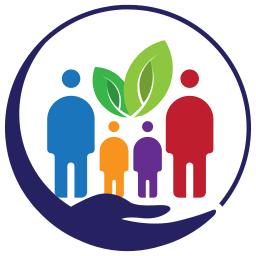There are currently over 2 million students in Canada are the majority of them rely on some form of loan or financial aid in order to help them cover tuition and the costs of living. Government loans are very helpful but they may not cover all of the costs and not everyone is eligible for them.
This guide will explain what student loans are and what the difference between public and private ones are, how much you could borrow and help you find the combination of financial aid that is right for you.
What is a student loan?
A student loan is an amount of money borrowed by someone engaged in full or part-time studies. In Canada, there are a number of ways to finance further education with both public loans and grants and private loans.
Everyone who is a citizen or full-time resident in Canada can apply for a student loan from either the government, their province or both. Some people on lower incomes may also be able to apply for government or local grants as well.
If you have maxed out your student loans, or are ineligible for one for another reason you can take out a private student loan, known as an educational line of credit. Eligibility for these is assessed like any loan, with a repayment limit and an interest rate dependent on the bank’s assessment of risk.
What type of lender is best?
If you are a citizen or a full-time resident of Canada, you can apply to the Canada Student Loans Program. The loans are available for part-time or full-time studies at accredited institutions.
You must meet the following criteria to apply:
your territory or province must be part of the Canada Student Loans Program
you can prove financial hardship
you must enroll in at least a 60% course load for a full-time student and of 20% course load for part-time students
if you have permanent disabilities you must be enrolled in at least 40% course load for full-time and part-time students
if you are aged 22 or older you must pass a credit check
you must not have surpasses the maximum lifetime amount of financial help
you must not fall below a satisfactory academic level
Your ability to access federal student loans depends on where you live. All provinces and territories also have their own student aid programs.

Need loan answers now?
Call +1 438 701 3770 to speak to our advisors right away, or book some time with them.
+1 855 410 9006 (Toll-Free for Outside Canada)
How much is a student loan?
How is your assessed need calculated?
Your assessed need is calculated with a simple formula:
This means that the loan program will calculate all the expenses relating to your studies that they assist with and will decide how much of that you can personally pay.
Have you surpassed your maximum limit? Take a look at our personal loan calculator to see how much you could borrow.
Who can get a student grant?
How big a student loan do you need?
As you can see there is help from several sources and it worth researching what is available in your province specifically as provisions vary.
However, is government help enough? In the example above Amelia would receive aid from the OSAP, the Canadian Student Grants Program, and the Canadian Student Loans Program. The amounts break down like this:
Therefore Amelia would receive a total of $31,675, out of which she has to pay her tuition fees of $11,420, leaving her with $20,255. The cheapest rent for a two-bed for Amelia and her daughter in Toronto is around $1,500 a month or $18,000 a year. This leaves Amelia with just $2,255 to cover expenses.
If Amelia has savings or can work alongside pursuing her studies she may be able to cover the weekly expense of food, transport, and any medical emergencies. If she cannot, however, she may be able to take out a private student loan, known as a student line of credit or an education line of credit to cover costs.
What is a student line of credit?
A student line of credit is a borrowing option specifically for students offered by some banks. A line of credit works a little differently than a loan. It’s more similar to a credit card. You can borrow some or all of it. As it is paid back, you can reborrow up to the built-in max. Have a line of credit for $5,000, but only use $1,500? Good news! You only have to repay the $1,500 that you spent plus interest.
Let’s compare student loans and lines of credit:
A student line of credit, also known as an education line of credit, can be a safer way to borrow money, especially for a younger person, that does not put them at risk of spiralling into debt.
Let’s take a look at what banks are offering:
Apply for a loan
A student line of credit vs student credit card?
A student credit can be very useful if there is an unforeseen emergency or a need to get funds quickly as it is a way of borrowing money without an application process. However, a credit card is not a good solution to being under-financed. It does not have the safety limits that a line of credit has and can lead you into a debt spiral.
That said, it is a useful thing to have in addition to a line of credit as it can solve one-off payments, like an emergency trip to the dentist.
Student line of credit
Pros
- Limit prevents debt from getting out of control
- Can only pay interest until graduated
- Interest rates may be lower than government loans
Cons
- Upper limit not flexible
- Interest rates are available and may go up

Need loan answers now?
Call +1 438 701 3770 to speak to our advisors right away, or book some time with them.
+1 855 410 9006 (Toll-Free for Outside Canada)
Student credit card
The interest rate and the length of your car loan have a big effect on the total interest you will pay. As cars have gotten more expensive, the length of car loans has increased. Once unthinkable, the most popular term length in Canada today is 84 months. That is seven years! 96-month (eight-year) loans are even available.
Just look at what a difference three years and 3% make:
Pros
- Prepared for emergencies
- Builds up your credit score
Cons
- Higher interest than traditional credit cards
- Low credit limits
Are there loans for international students?
The government-managed student loans and grants are only available for Canadian citizens and full-time Canadian residents.
However, if you are an international student you may be able to take out a personal loan to finance your studies. Take a look at our personal loan calculator to help yourself find the right deal.
Are there alternative ways to fund education?
As well as grants and loans, the Canadian government offers a wide range of scholarships in different subjects as well as funding for postgraduate education. It is worth researching and seeing if there could be help specifically for you!
If you are thinking bout the education of your children or grandchildren, one of the best ways to save money for their education is through a Registered Education Savings Plan or RESP. This is a government program that invests your savings specifically so you can pay for education costs.
Some student line of credit banks will accept an RESP as security. A secured loan will typically offer lower interest rates as there is a decreased level of risk for the bank.
Interested in setting up an RESP or just taking a look at what investment deals one offers?
